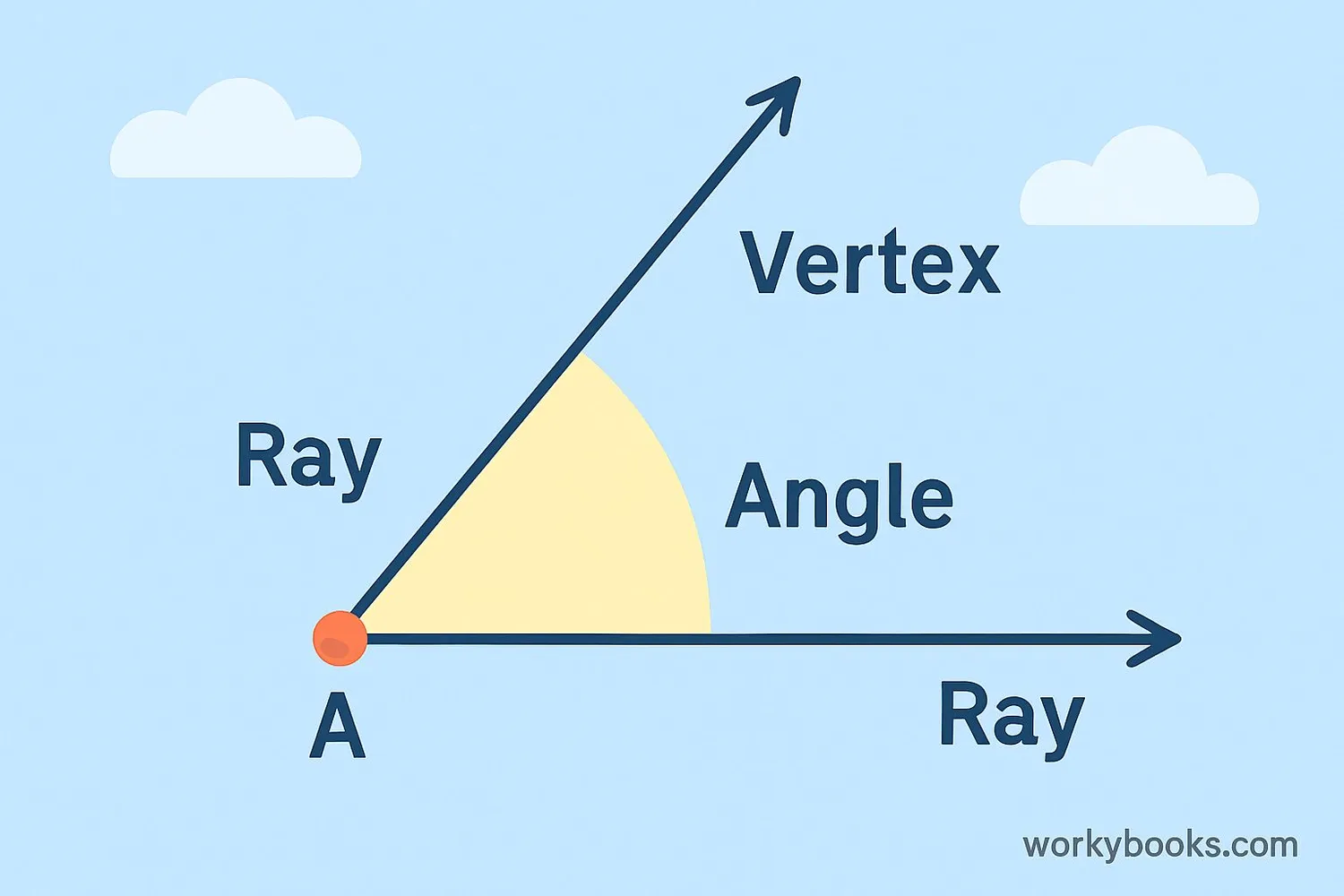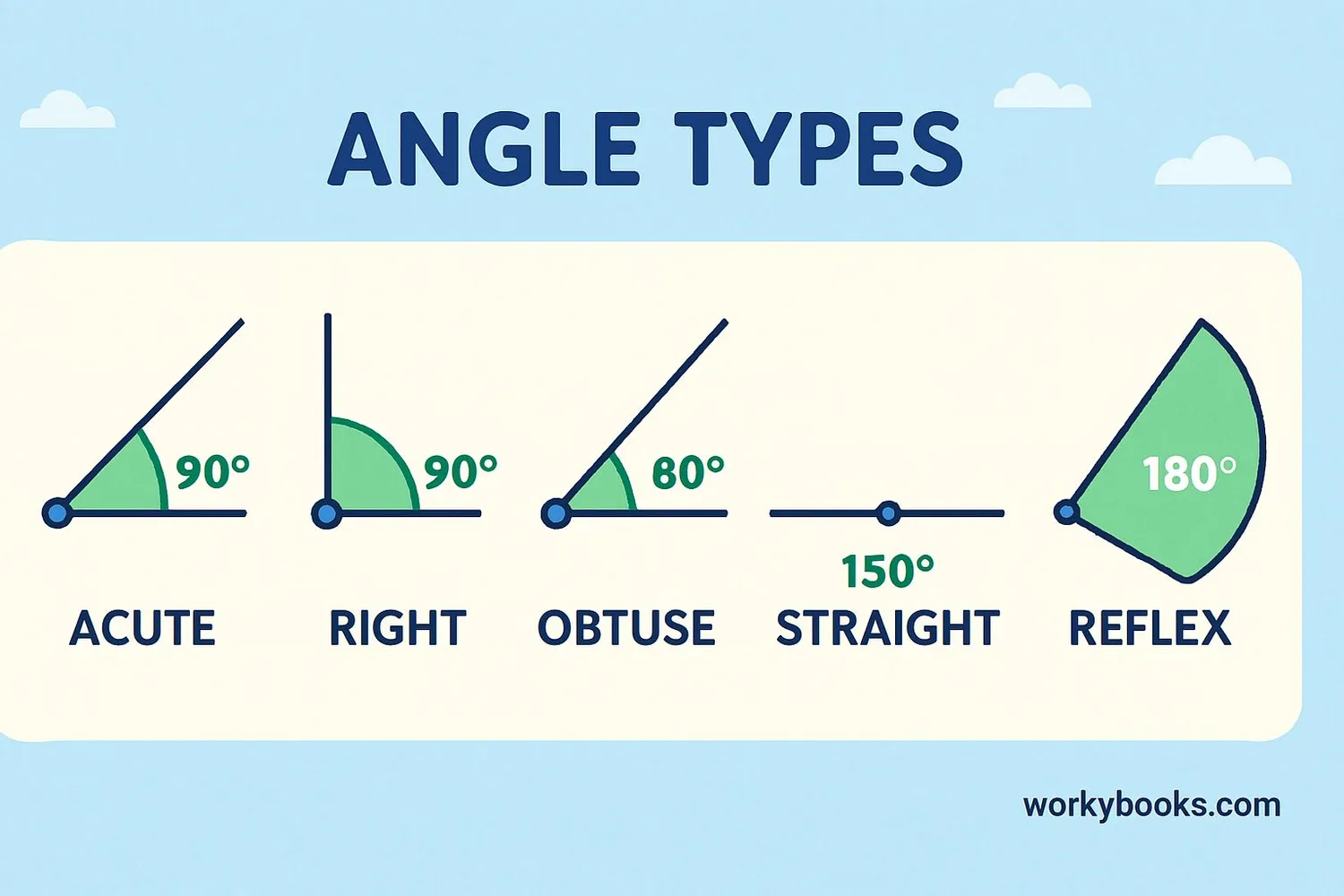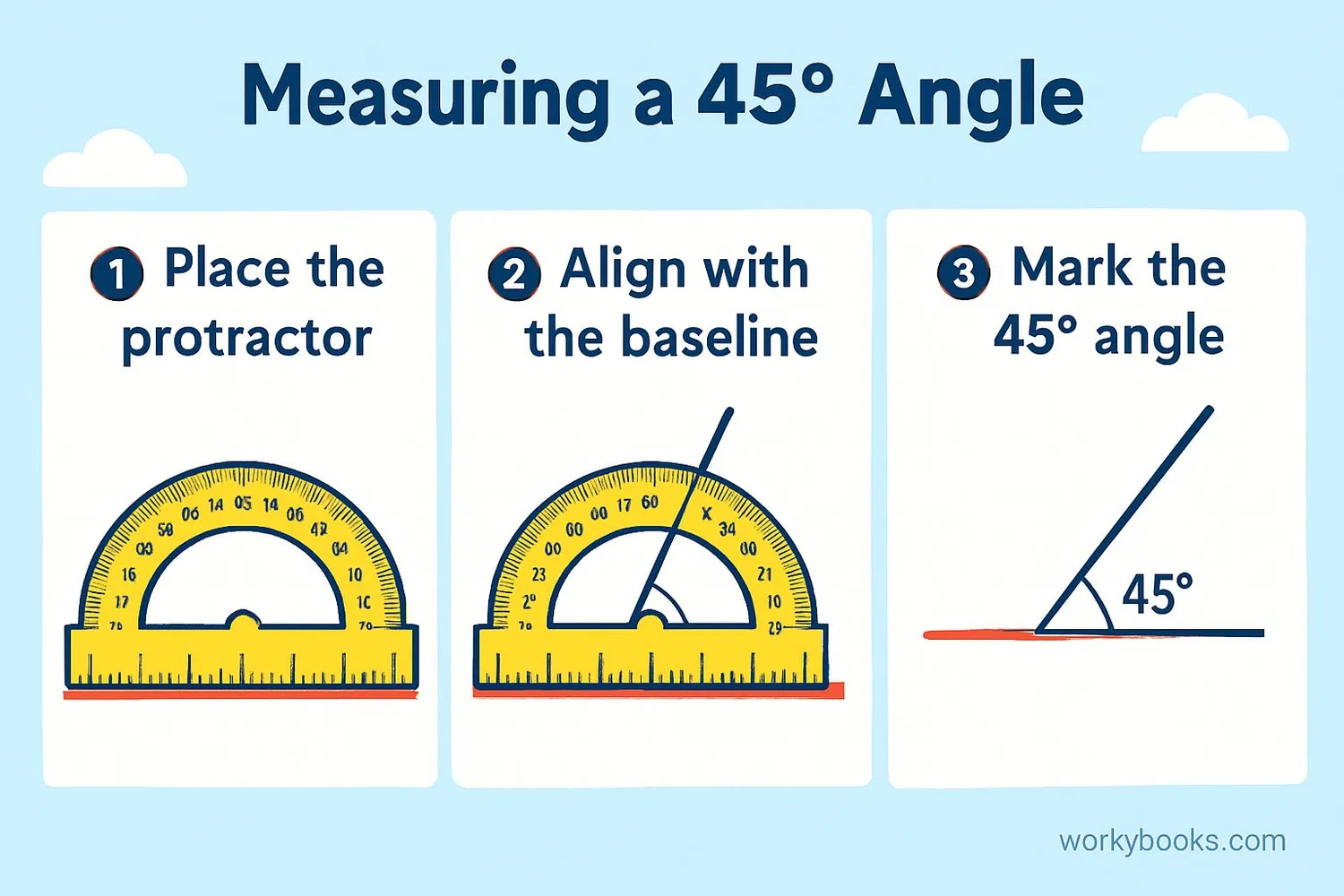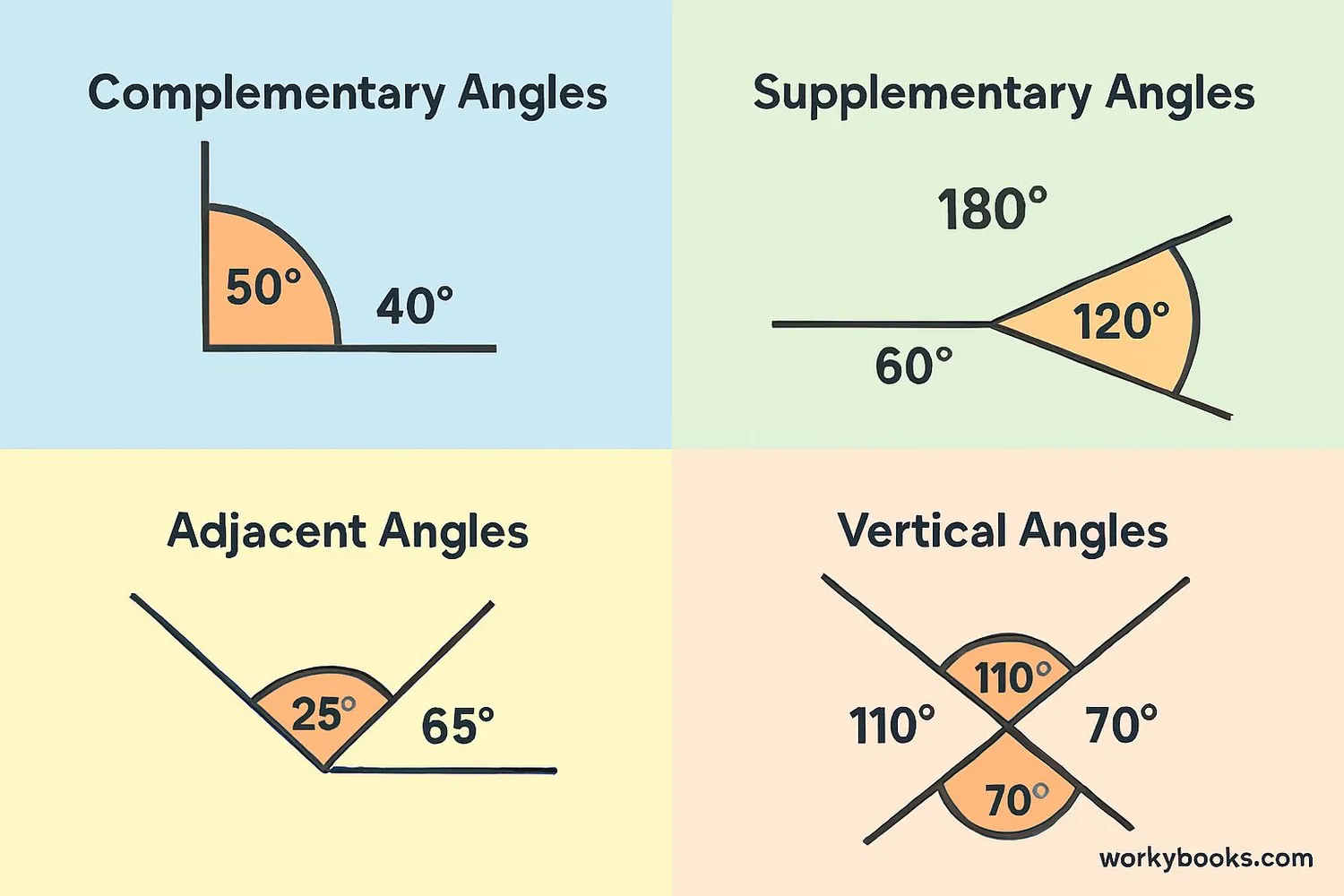Angle Measure - Definition, Examples, Quiz, FAQ, Trivia
Learn about different types of angles, how to measure them, and their properties
What is an Angle?

An angle is formed when two straight lines or rays meet at a common point called the vertex. The two rays that form the angle are called the arms of the angle.
Angles are measured in degrees, which we write with a small circle like this: 90°. The size of an angle depends on how much one ray is turned away from the other.
You can find angles everywhere in our world - in the corners of rooms, in the hands of a clock, and in the shapes of many objects around us. Understanding angles helps us describe and measure shapes and spaces.
Key Concept
Every angle has two arms and one vertex where they meet. The angle is measured by how much the rays turn away from each other.
Types of Angles

Angles come in different types based on their measurement in degrees. Here are the main types:
Acute Angle
Less than 90°
Right Angle
Exactly 90°
Obtuse Angle
90° to 180°
Straight Angle
Exactly 180°
There are also reflex angles that measure between 180° and 360°, and a full rotation that measures exactly 360°. Each type of angle has its own special properties and appears in different shapes and patterns.
Remember
A right angle (90°) is like the corner of a book. An acute angle is smaller than that, and an obtuse angle is larger than a right angle but smaller than a straight line.
How to Measure Angles

We measure angles using a tool called a protractor. Here's how to use it:
Step 1: Place the center point of the protractor on the vertex of the angle.
Step 2: Align one ray of the angle with the 0° line on the protractor.
Step 3: Read the measurement where the other ray crosses the protractor's scale.
Protractors have two scales (inner and outer) so be careful to use the correct one! Always start from 0° and follow the direction of the angle.
Measuring Tips
Remember: Angles are measured from the baseline (0°) to the other ray. The measurement tells you how much the rays have turned away from each other.
Practice Tip
Try measuring angles in your classroom or at home. Look at the corners of doors, books, and windows. What types of angles do you find?
Special Angle Pairs

Some angles have special relationships when they appear together:
Complementary Angles: Two angles that add up to 90°. For example, 30° and 60° are complementary.
Supplementary Angles: Two angles that add up to 180°. For example, 120° and 60° are supplementary.
Adjacent Angles: Angles that share a common vertex and side but do not overlap.
Vertical Angles: When two lines cross, the opposite angles are equal. These are called vertical angles.
| Angle Pair | Relationship | Example |
|---|---|---|
| Complementary | Add to 90° | 15° + 75° |
| Supplementary | Add to 180° | 45° + 135° |
| Adjacent | Share vertex and side | Corner angles |
| Vertical | Equal opposite angles | X-shaped angles |
Remember
Complementary angles complete a right angle (90°), while supplementary angles complete a straight line (180°).
Angle Measurement Quiz
Test your angle knowledge with this 5-question quiz. Choose the correct answer for each question.
Frequently Asked Questions
Here are answers to common questions about angles:
Geometry Trivia
Discover interesting facts about angles and geometry:
Ancient Angle Measurement
The Babylonians developed the degree system around 4,000 years ago. They chose 360 degrees for a full circle because it approximated the number of days in a year and has many divisors.
Nature's Angles
Honeybees build their honeycombs with precise 120° angles, creating perfect hexagons. This shape allows them to store the most honey using the least amount of wax.
Angles in Space
Astronomers use angles to measure distances between stars. The unit "light-year" is combined with angular measurements to calculate vast distances in space.
Angles in Sports
In basketball, the optimal angle for shooting a free throw is about 52 degrees. Players who consistently release the ball at this angle have higher shooting percentages.


